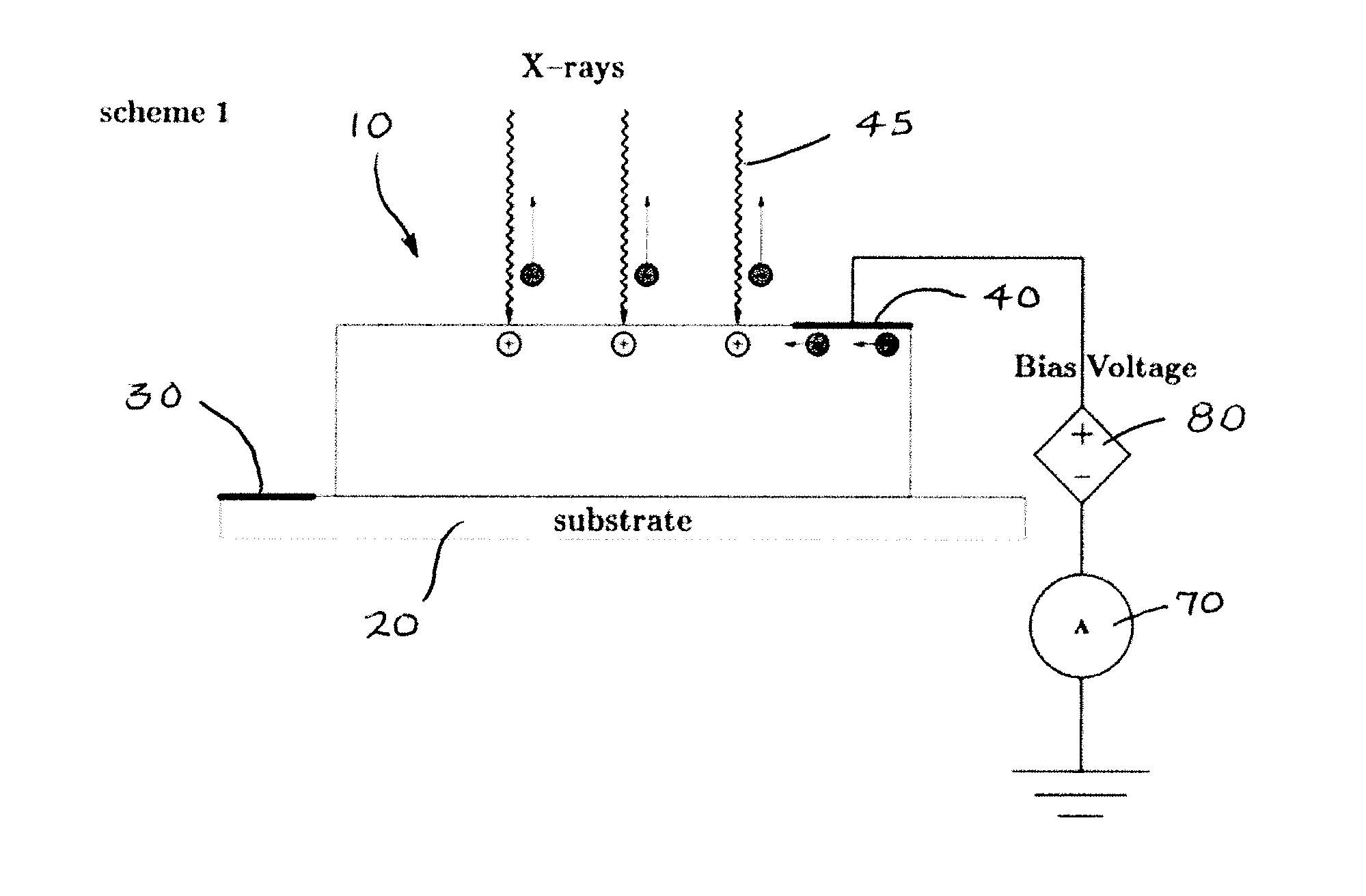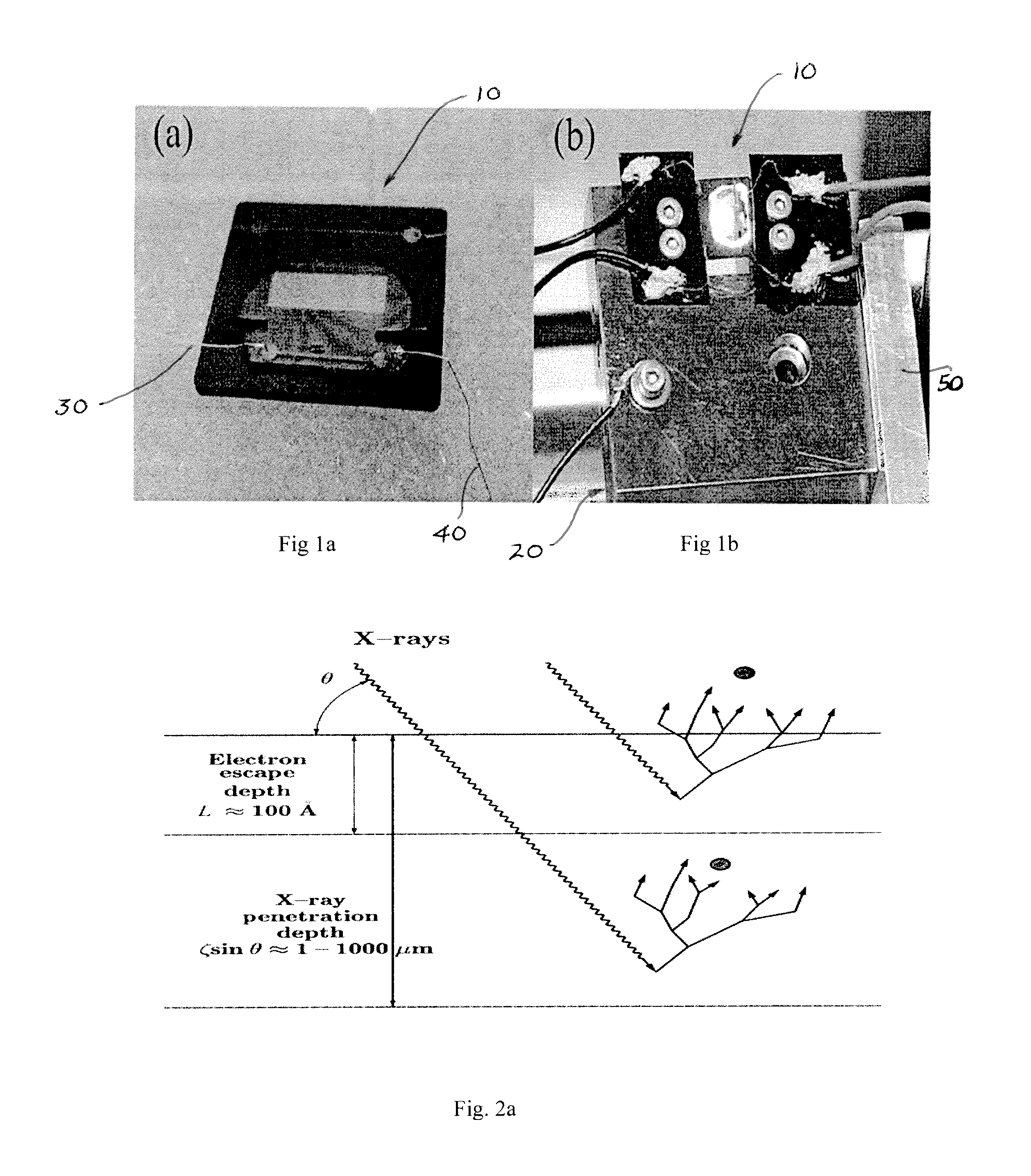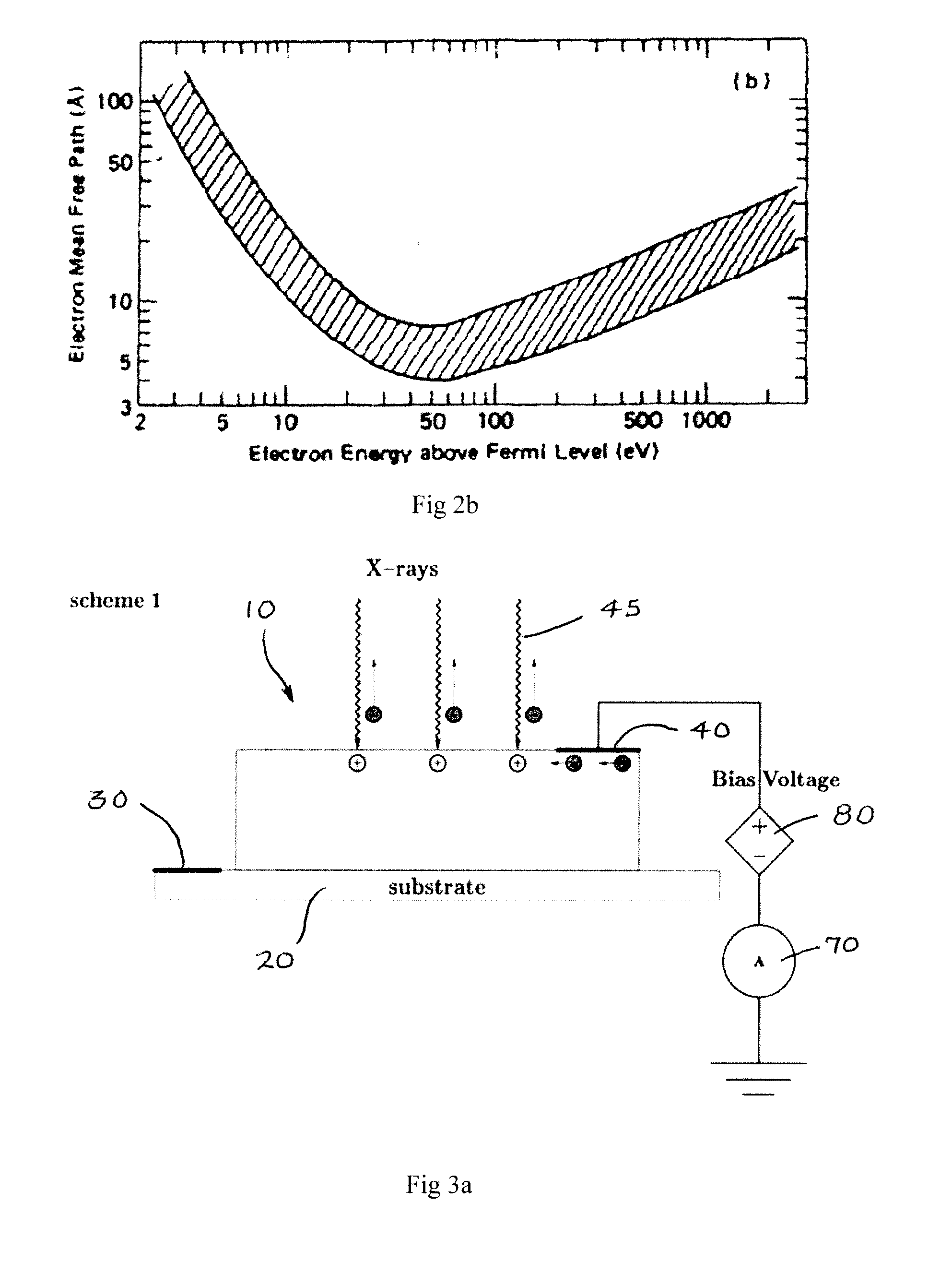X-Ray Monitoring Optical Elements
a technology of optical elements and x-rays, applied in radiation/particle handling, nuclear engineering, electric devices, etc., can solve problems such as uncompensated electric charges, and achieve the effect of enhancing surface conductivity and increasing surface conductivity
- Summary
- Abstract
- Description
- Claims
- Application Information
AI Technical Summary
Benefits of technology
Problems solved by technology
Method used
Image
Examples
example i
[0022]A quantitative description of total electron yield is provided which follows a known basic phenomenological model [see, for example, J. Stohr, NEXAFS spectroscopy, vol. 25 of Springer Series in Surface Sciences (Springer, Berlin Heidelberg New York, 1992)]. The goal is to estimate electric current due to total electron yield in several primary X-ray optical materials for hard X-rays. This consideration will lead to several important practical estimates given in Example III.
[0023]At normal incidence X-ray photons penetrate into the bulk of the material to a characteristic depth ζ (X-ray absorption length) given by the inverse of the linear attenuation coefficient μ(EX) [cm−1], which is a function of photon energy EX. The X-ray flux density f [photons / (s cm2)] transmitted through a material depth z is attenuated (with respect to an incident flux f0 according to the Beer's law
f=f0exp(−μ(EX)z). (1)
[0024]The X-ray attenuation coefficient is related to the total X-ray attenuation c...
example ii
Quantum Yield
[0037]In this Example II particular practical cases are considered to obtain formulas for a quantum yield, which is a number of photoelectrons emitted per single incident X-ray photon of energy EX:
Q=Yf0S0=12(1-R(θ))GeLζθ+L.(7)
[0038]In grazing incidence under the condition of total external reflection (i.e., X-ray mirror case) a substantial increase in the quantum yield can be obtained. This condition is satisfied if θC where θC is the critical angle that depends on the choice of the material and incident photon energy (e.g.,). The estimate of total electron yield can be performed by replacing in Eq. (7) the X-ray penetration depth ζθ with X-ray attenuation length Λ in total external reflection. The values for Λ can be obtained using an online calculator.
[0039]The penetration depth at angle of incidence below the critical angle can be several times smaller than the effective electron escape length. Therefore an assumption Λ<<L can be applied. Under this approximation the...
example iii
[0043]Table I herebelow presents a summary of quantum yield for various X-ray optical materials. For Au the effective photoelectron escape depth was assumed L=50 Å. For other materials in the list (a dielectric C and a semiconductor Si) L=100 Å was assumed. In case of Au the value for Ge was available in the literature; and the quantum yield at a representative energy 10 keV was estimated directly from Eq. (7). For C and Si the values for electron yield relative to that of Au were given in the literature for particular energies. In these cases Ge was calculated at those energies and extrapolated to a representative energy of 10 keV.
[0044]In the case of total external reflection (TER) for Au the quantum yield can be as high as 0.6 (Au) which is due to the fact that the X-ray photon penetration depth is only about 10 Å (much less than L=50 Å). The X-ray photon penetration depth was estimated at an angle of θ=2.5 mrad, which is below the critical angle for total external reflection for...
PUM
 Login to View More
Login to View More Abstract
Description
Claims
Application Information
 Login to View More
Login to View More - R&D
- Intellectual Property
- Life Sciences
- Materials
- Tech Scout
- Unparalleled Data Quality
- Higher Quality Content
- 60% Fewer Hallucinations
Browse by: Latest US Patents, China's latest patents, Technical Efficacy Thesaurus, Application Domain, Technology Topic, Popular Technical Reports.
© 2025 PatSnap. All rights reserved.Legal|Privacy policy|Modern Slavery Act Transparency Statement|Sitemap|About US| Contact US: help@patsnap.com



